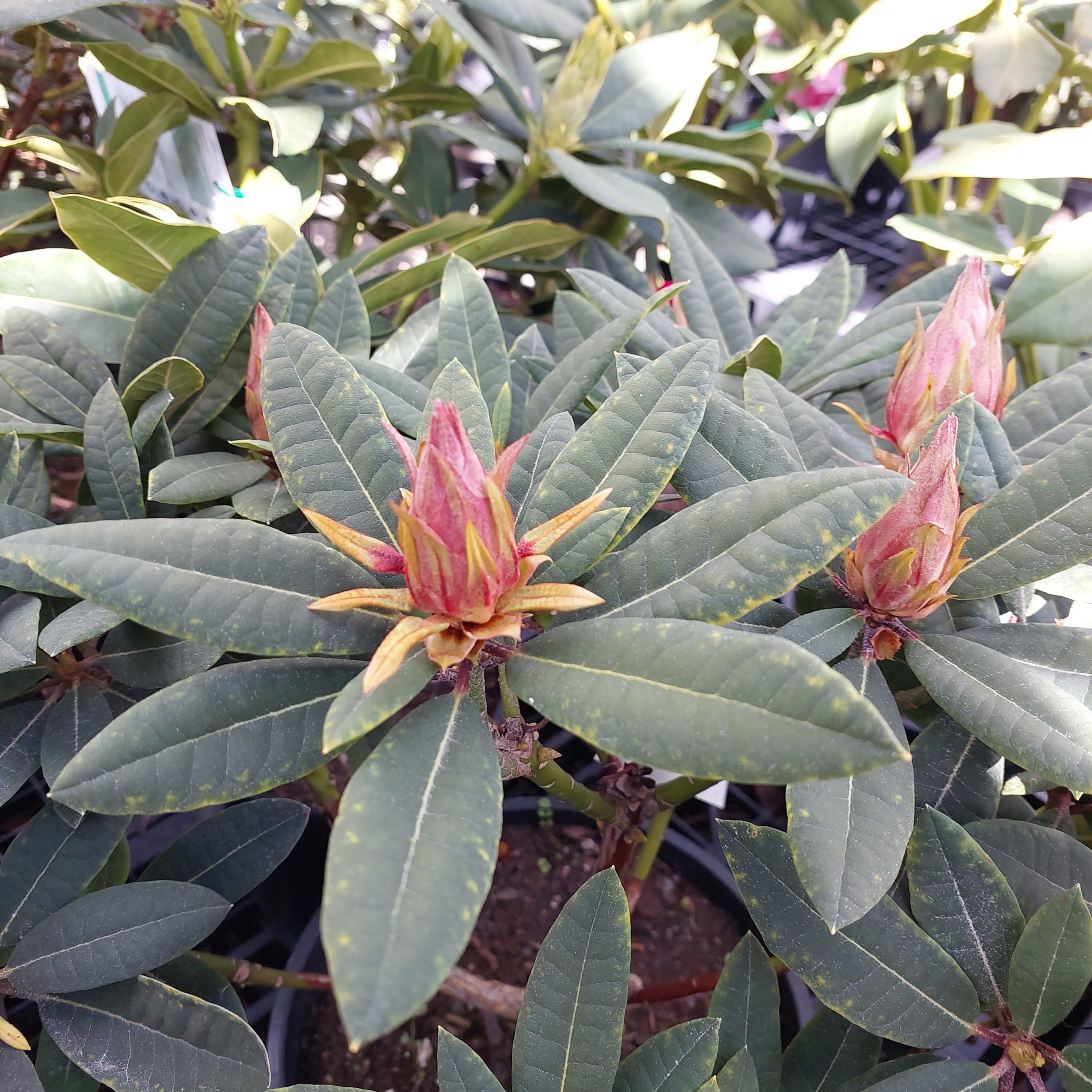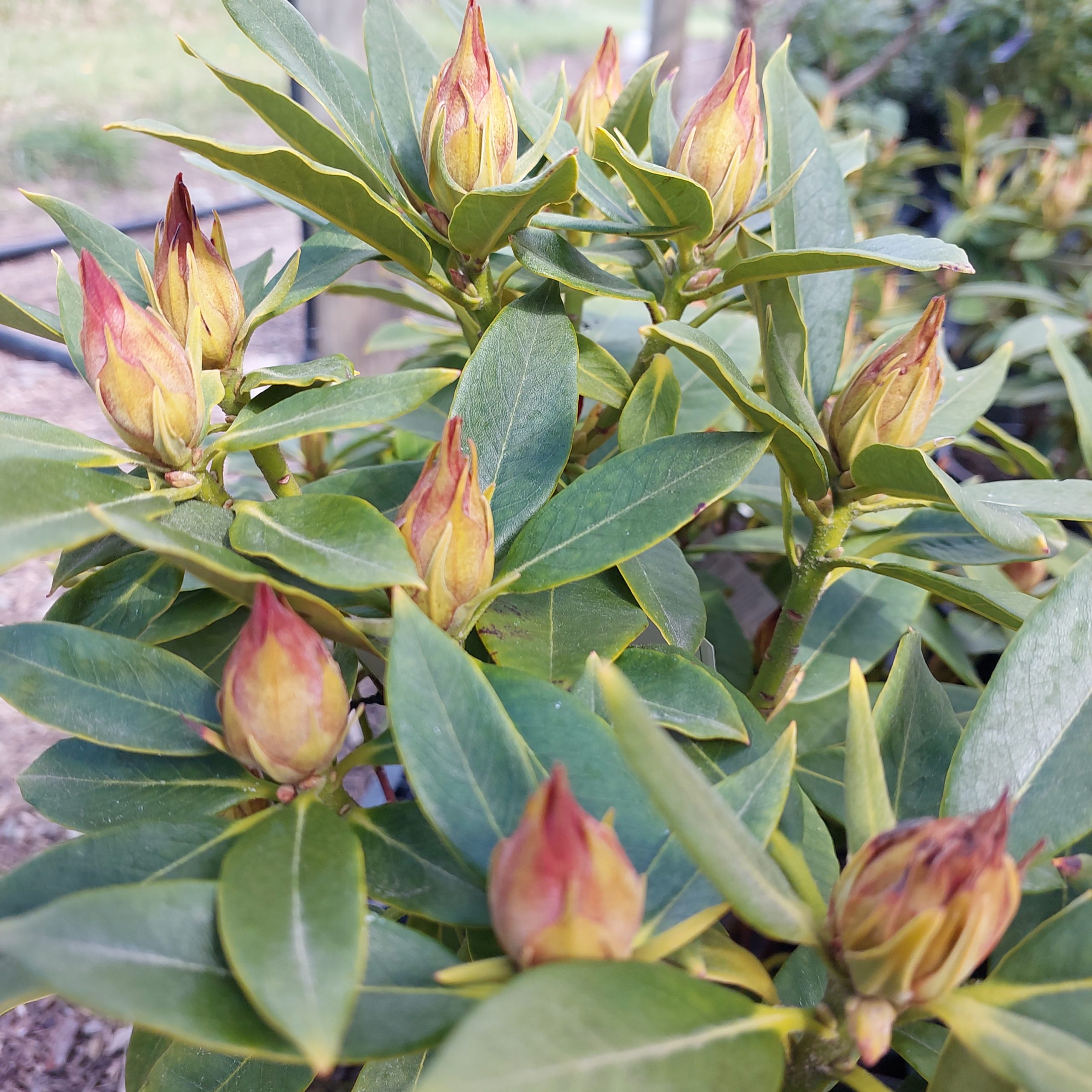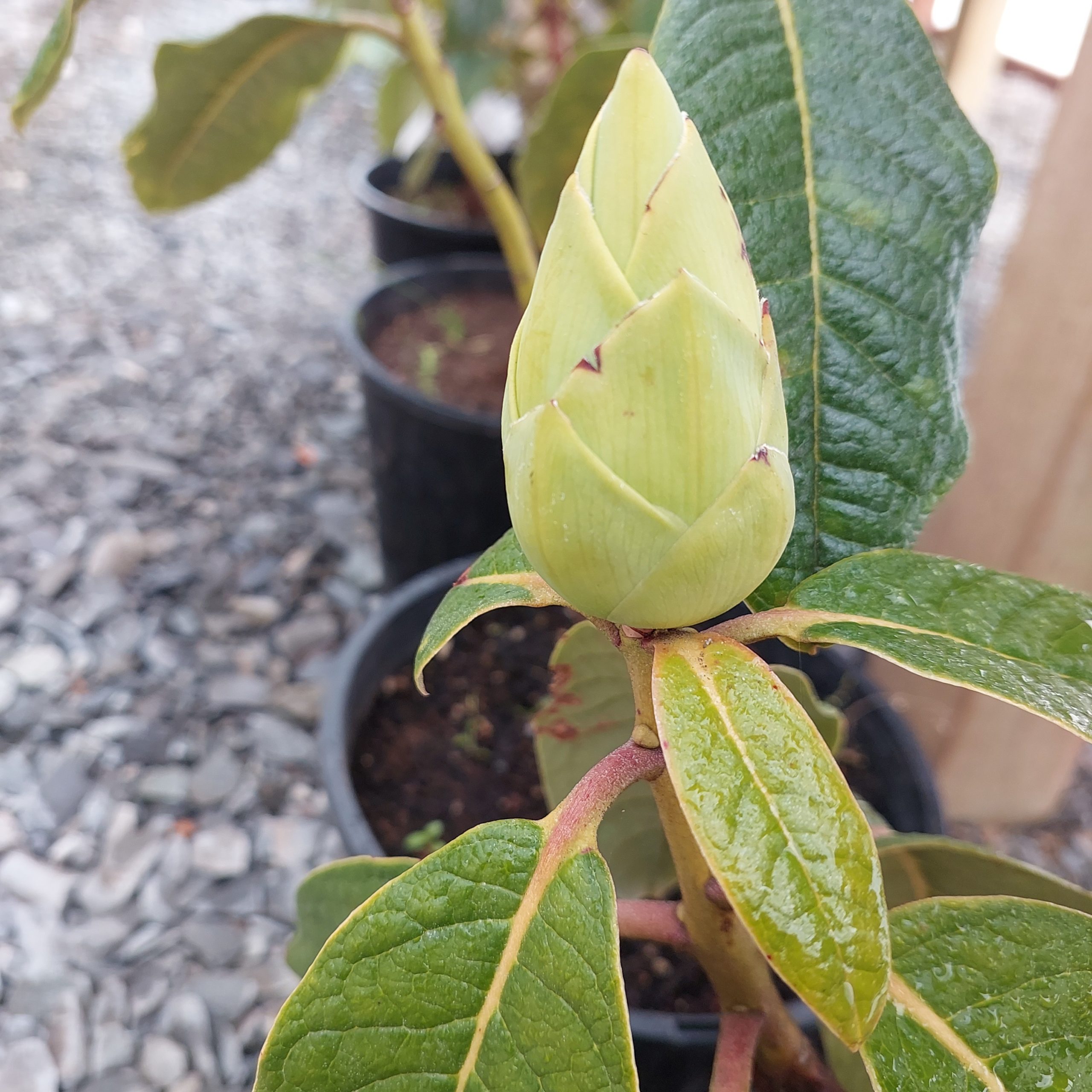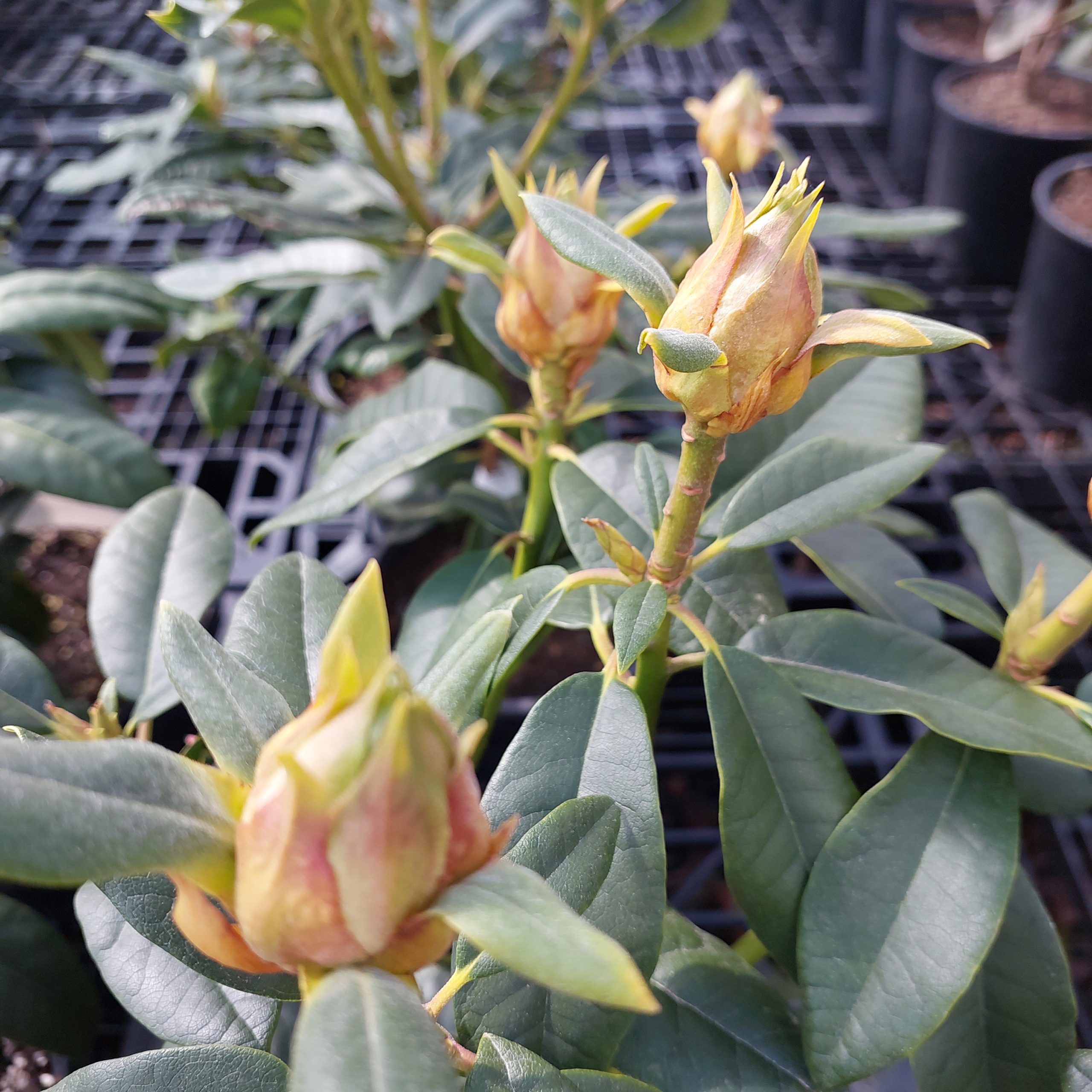In rhododendrons, understanding the difference between leaf buds and flower buds is essential for predicting growth patterns and managing the plant’s health.
- Flower buds are typically larger, rounder, and more compact compared to leaf buds. These buds contain the developing flowers for the next bloom season, and their bulkier appearance is due to the tightly packed floral structures inside. You’ll often find them at the terminal ends of branches during late summer or autumn, as the plant prepares for its spring bloom. Their size and round shape make them easier to identify as future flowers.
- Ross Maude Rhododendron Flower Bud
- Jingle Bells Rhododendron Flower Bud
- Ivory Empress Rhododendron Flower Bud
- Colonel Coen Rhododendron Flower Bud
- Leaf buds, in contrast, are smaller, narrower, and more pointed. These buds will grow into new vegetative shoots rather than flowers. Leaf buds tend to be more elongated and are often located either alongside flower buds or in less prominent spots on the branch.

Example: of a leaf bud
A useful visual distinction is that flower buds appear “fatter” because they store more energy required for bloom production, while leaf buds are slender and elongated. Flower buds are reproductive, focusing on creating flowers, while leaf buds are vegetative, contributing to the plant’s foliage.
At the nodes, where the buds form, significant cellular growth takes place, preparing the buds to either become leaves or flowers. This growth phase is crucial for both types of buds, though flower buds typically require more energy to support the development of blooms.
Additionally, the latent bud is the inactive bud on the growing shoot from which the following year’s growth and flowers will emerge. The flower bud, which is dormant and sheathed in leaves, typically forms in late summer and remains visible through winter, waiting to bloom the next season.




